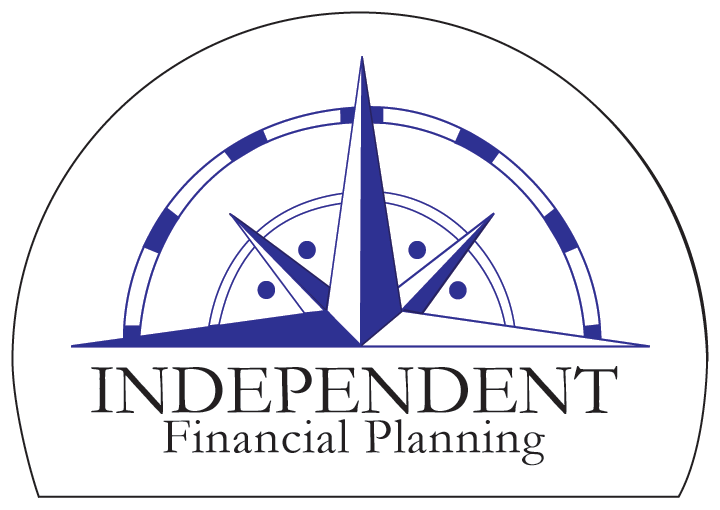As retirement approaches, the transition from accumulation to distribution presents unique challenges that demand sophisticated strategies beyond conventional wisdom. Understanding how to optimize portfolio construction, systematic withdrawals, tax management, and advanced investment techniques can dramatically improve your retirement outcomes. This article examines evidence-based strategies to help you navigate this critical transition with greater confidence and financial security.
Understanding Portfolio Expectations and Risks in Retirement
Retirement planning centers around a complex challenge: how to balance generating sufficient income (whether by dividends or capital gains) while maintaining portfolio sustainability through what could be a 30+ year retirement. This challenge is intensified by several factors that require careful consideration. Sequence of returns risk can devastate a portfolio when poor market performance occurs early in retirement, even if long-term average returns are positive. Unlike the accumulation phase where your time horizon is known, retirement planning must account for longevity uncertainty. Even modest inflation rates can significantly erode purchasing power over a multi-decade retirement. Additionally, improper withdrawal sequencing across different account types can needlessly increase tax burden, while traditional portfolio construction approaches may create an "efficiency ceiling" that limits potential returns for acceptable risk levels.
Beyond the Traditional 60/40: Return Stacking and Modern Portfolio Construction
Traditional retirement portfolios typically center around a 60/40 stock-bond allocation, but research suggests this approach may unnecessarily limit your portfolio's potential. Return stacking represents a significant innovation in portfolio design that allows investors to potentially achieve higher returns without proportionally increasing portfolio risk. This approach uses capital-efficient instruments to gain exposure to multiple return streams with the same capital.
According to research by ReSolve Asset Management, a return-stacked portfolio can achieve exposure to multiple asset classes and strategies simultaneously using the same capital, effectively leveraging. For example, a portfolio with 80% equity exposure, 50% bond exposure, and 20% trend-following exposure can maintain approximately the same risk level as a traditional 60/40 portfolio. This is possible because the bond component provides stability and often performs well during equity drawdowns, while the trend-following component tends to perform well when stocks and bonds flag (i.e. 2022). The combined diversification effect helps manage overall portfolio volatility, even though the individual components returns will vary widely.
In mathematical terms, the expected portfolio risk (σp) can be expressed as:
Where:
w represents allocation weights
σ represents asset volatility
ρ represents correlation between assets
This formula from Markowitz's foundational work on Modern Portfolio Theory shows how portfolio risk depends not just on individual asset risks, but on how those assets move in relation to one another. When properly constructed with assets that have favorable correlation properties, return stacking can enhance returns while maintaining risk at levels comparable to traditional portfolios.
Beyond basic return stacking, incorporating trend-following strategies and alternative risk premia can further enhance retirement portfolios. Research by Hurst, Ooi, and Pedersen found that trend following strategies have provided consistent performance across diverse market environments for over a century, offering valuable diversification for traditional portfolios. Factors such as value, momentum, carry, and defensive characteristics can be accessed across multiple asset classes to further diversify return sources.
A mathematically optimized portfolio might combine a core bond allocation (40-60% of capital), equity market exposure via futures or ETFs with embedded leverage (60-90% notional exposure), and trend-following overlay (15-30% notional exposure). This approach can potentially increase expected returns while simultaneously reducing maximum drawdowns—a critical consideration for managing sequence risk.
Probability of Failure Decision Rules: Advanced Withdrawal Management
While the traditional 4% rule has been a staple reference point, more sophisticated approaches like the Probability of Failure (PoF) Decision Rules offer significantly improved retirement outcomes. Frank, Mitchell, and Blanchett's research introduced a framework for optimizing withdrawals based on maintaining a constant probability of failure throughout retirement. This approach establishes a target probability of failure (typically 10-20%) and calculates a withdrawal amount that maintains this probability based on current portfolio value, remaining retirement duration, updated mortality expectations, and current market conditions.
The mathematical foundation rests on calculating the sustainable spending rate (SSR) under different market scenarios, which is then compared across different market scenarios to determine the withdrawal rate that maintains the desired probability of failure. In practice, implementing a PoF strategy involves setting a baseline failure probability, with research suggesting 10-15% provides an optimal balance between spending and security. At the beginning of each year, the strategy recalculates based on updated life expectancy, current portfolio value, expected returns given current market conditions, and a withdrawal amount that maintains the target probability of failure. Based on these calculations, annual withdrawals are adjusted to maintain the target probability of failure.
Frank and colleagues found that this approach better balanced the dual goals of maximizing retirement spending while minimizing the risk of outliving one's assets. Their research demonstrated that compared to static withdrawal strategies, PoF-based approaches could increase lifetime withdrawals while maintaining the same risk profile.
Strategic Tax Management in Retirement
Tax efficiency in retirement is not merely about minimizing current year taxes—it's about minimizing lifetime tax burden. Research demonstrates that proper tax management can significantly extend portfolio longevity. The optimal withdrawal sequence depends on your specific circumstances, but research suggests several general principles worth considering.
Strategic Roth conversions during early retirement years can fill lower tax brackets, particularly if you anticipate higher tax brackets later due to Required Minimum Distributions. While conventional wisdom suggests spending taxable accounts first, then tax-deferred accounts, and finally tax-free accounts, this needs refinement based on current and expected future tax brackets, specific investment locations, Required Minimum Distributions, and estate planning goals.
For a concrete example of how tax-efficient withdrawals impact portfolio longevity, consider a retiree with $500,000 in taxable accounts, $1,000,000 in tax-deferred accounts (Traditional IRA), and $500,000 in tax-free accounts (Roth IRA). Research by Reichenstein shows that optimal tax planning that minimizes lifetime tax burden rather than simply current-year taxes can significantly increase portfolio longevity compared to naive withdrawal strategies.
The core mathematical principle is maintaining the lowest possible marginal tax rate throughout retirement. This might mean using taxable accounts primarily for living expenses initially, performing Roth conversions up to the top of a lower tax bracket, strategically harvesting capital gains during low-income years, and coordinating withdrawals with Social Security claiming strategies.
Beyond withdrawal sequencing, strategic asset location and ongoing tax-loss harvesting can further enhance after-tax returns. Asset location involves placing tax-inefficient investments (ordinary dividend distributors) in tax-advantaged accounts and tax-efficient investments (qualified dividends and long-term capital gain) in taxable accounts. Tax-loss harvesting involves systematically realizing losses to offset gains while maintaining market exposure, potentially adding measurable value in annual after-tax returns according to Vanguard research. For retirees with significant taxable assets, maintaining a systematic tax-loss harvesting program throughout retirement can significantly enhance after-tax returns. Also choosing ETFs over mutual funds in taxable accounts can make a substantial difference.
Implementing an Integrated Strategy
Implementing an advanced retirement income strategy requires integrating several components into a cohesive approach. First, develop a portfolio that leverages return stacking principles with a core bond allocation (40-50% of capital), equity exposure via futures or ETFs with embedded leverage (70-90% notional exposure), and trend-following allocation (15-30% notional exposure). Research indicates this type of portfolio can potentially maintain risk levels similar to a traditional 60/40 portfolio while offering enhanced return potential.
Next, adopt a dynamic withdrawal policy that establishes a baseline withdrawal amount based on a 10-15% target probability of failure, recalculate annually based on your updated portfolio value, life expectancy, and market conditions, and adjust withdrawals to maintain the target probability of failure. Finally, develop a multi-year tax strategy that coordinates account withdrawals to minimize lifetime tax burden, implements strategic Roth conversions during lower-income years, maintains active tax-loss harvesting in taxable accounts, and adjusts asset location for tax efficiency. I will add that I also prefer to have private investments with inherently different risks than stocks, bonds, and trend for additional diversification and higher returns for those accredited investors who can take advantage of it.
Sample Case Study: Integrating All Components
Let's examine how these strategies might work together for a hypothetical retiree:
Elizabeth, 65, with $2 million in retirement savings:
$800,000 in taxable accounts
$1,000,000 in Traditional IRA
$200,000 in Roth IRA
Step 1: Portfolio Construction with Return Stacking Elizabeth implements a return-stacked portfolio that achieves effective exposure of:
80% equity exposure
50% bond exposure
20% trend-following exposure
This portfolio is designed to deliver higher expected returns than a traditional 60/40 portfolio while maintaining similar risk characteristics. Again, one can substitute equity for real estate equity and some bonds for private lending.
Step 2: PoF-Based Withdrawal Strategy Based on her assets and expected returns:
Initial withdrawal amount: $85,000 (4.25% of portfolio)
Target probability of failure: 15% (or lower depending upon risk tolerance)
Annual recalculation based on updated portfolio value and remaining life expectancy
Step 3: Tax Management Strategy
Years 65-72: Strategic Roth conversions filling the 22% tax bracket
Initial withdrawals primarily from taxable accounts
Asset location optimized with bonds in tax-deferred accounts, equities in taxable and Roth accounts (this can be a bit more difficult when it comes to rebalancing)
Ongoing tax-loss harvesting in taxable accounts
With this integrated approach, modeling suggests Elizabeth could potentially increase her lifetime spending by 15-20% compared to a traditional 60/40 portfolio with a static 4% withdrawal rule, while maintaining the same risk profile.
Conclusion: Embracing Sophisticated Strategies for Retirement Success
The evidence is clear: integrating advanced portfolio construction techniques like return stacking with dynamic withdrawal strategies based on probability of failure, and strategic tax management can dramatically improve retirement outcomes compared to traditional approaches. As a result retirees can significantly improve their financial security throughout retirement while maximizing their standard of living.
The retirement landscape continues to evolve with new research and investment innovations. Working with a financial professional who understands these advanced techniques can help you navigate the complexities of retirement with greater confidence and financial security. Feel free to reach out and schedule your in-depth financial review.
References
[1] Butler, A., Philbrick, M., & Gordillo, R. (2021). "Return Stacking: Strategies for Overcoming a Low Return Environment." ReSolve Asset Management whitepaper. Available at returnstacking.com.
[2] Hurst, B., Ooi, Y. H., & Pedersen, L. H. (2017). "A Century of Evidence on Trend-Following Investing." The Journal of Portfolio Management, 44(1), 15-29.
[3] Frank, L. R., Mitchell, J. B., & Blanchett, D. M. (2011). "Probability-of-Failure-Based Decision Rules to Manage Sequence Risk in Retirement." Journal of Financial Planning, 24(11), 46-55.
[4] Reichenstein, W. (2019). "Tax-Efficient Retirement Withdrawal Planning." The Journal of Retirement, 7(2), 25-44.
[5] Kinniry, F. M., Jaconetti, C. M., DiJoseph, M. A., & Zilbering, Y. (2019). "Putting a Value on Your Value: Quantifying Vanguard Advisor's Alpha." Vanguard Research.
[6] Markowitz, H. (1952). "Portfolio Selection." The Journal of Finance, 7(1), 77-91.



